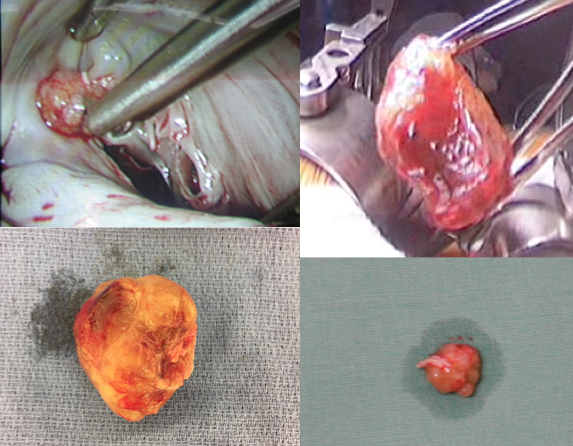Myxoma

Myxoma is an intracardiac benign tumor. Seventy five percent of all myxomas are found in the left atrium, and almost all other myxomas are found in the right atrium. It is very rare for a myxoma to be found in either of the ventricles.
Syndromes linked to Myxomas
The tumor takes one of two general shapes: a round, firm mass, or an irregular shaped, soft, gelatinous mass. They are attached to the endocardium, the inside lining of the heart. Myxomas may contain calcium, which shows up on X rays. Thrombi may be attached to the outside of the myxoma.
There are three major syndromes linked to myxomas: embolic events, obstruction of blood flow, and constitutional syndromes.
- Embolic events happen when fragments of the tumor, or the thrombi attached to the outside of the tumor, are released and enter the blood stream. Gelatinous myxomas are more likely to embolize than the more firm form of this tumor. Embolization can lead to severe consequences. In cases of left atrial myxoma, 40-50% of patients experience embolization. Emboli usually end up in the brain, kidneys, and extremities.
- Obstruct blood flow in the heart, usually at a heart valve. The mitral valve is the heart valve most commonly affected. Blood flow restrictions can lead to pulmonary congestion and heart valve disease.
- Constitutional syndromes, nonspecific symptoms caused by the myxoma.
- Most often Myxoma is an Echocardiography discovery.
Myxoma TEE
Myxoma in Mitral valve TEE
Nowadays, Minimally Invasive approach is the new standard for Myxoma removal.
Myxoma Septal Atrial
Read more of Minimally Invasive Valve Surgery here.
Robotic resection of Mitral valve Fibroelastoma
Robotic approach may be an alternative in case of small tumor as Fibroelastoma
